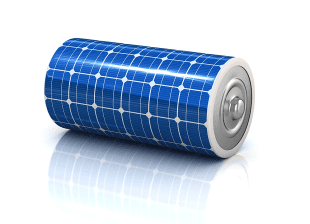 In Australia, spring has sprung and the days are getting longer and warmer. For residential solar households, this means one thing – more energy production. Only in the state of New South Wales, solar users will no longer be getting paid as much for it. Earlier this month, the NSW Independent Pricing and Regulatory Tribunal (IPART) recommended the average solar feed-in tariff be cut by 14 per cent – from an average 5.6c/kWh to 4.8c/kWh – making it the lowest rate in Australia.
In Australia, spring has sprung and the days are getting longer and warmer. For residential solar households, this means one thing – more energy production. Only in the state of New South Wales, solar users will no longer be getting paid as much for it. Earlier this month, the NSW Independent Pricing and Regulatory Tribunal (IPART) recommended the average solar feed-in tariff be cut by 14 per cent – from an average 5.6c/kWh to 4.8c/kWh – making it the lowest rate in Australia.
The regulator points to the eight per cent decrease in demand for electricity during peak daytime periods to justify the cut, thanks to the rapid uptake of solar panel installation by NSW residents as part of the Australian Government’s Small-scale Renewable Energy Scheme (SRES). Some people – including IPART – believe the move will push consumers towards adopting energy storage systems. The announcement has been polarizing, but no matter which side you’re on, energy storage systems are the inevitable next step. And that’s a good thing.
By installing an energy storage system, households get to use the energy when they need it most – in the evenings when the sun is no longer shining. They can have peace of mind that power will always be available when the grid fails during severe weather. And, by reducing their reliance on the grid during peak periods, they can significantly reduce their own energy costs. According to IPART, the possibility for customers to use more of the electricity they generate means the appeal of traditional feed-in tariffs becomes less relevant over time.
Energy storage systems also present significant benefits for utilities. In fact, encouraging more consumers to install solar batteries may be just the key to utilities keeping the peace with consumers fed up with sky high power bills. From a network perspective, energy storage systems help reduce the overall load on the grid at times of peak need, like hot Australian summer nights when air conditioning units are blaring. They reduce the grid’s dependence on diminishing fossil fuels and their impact on the environment.
There are economic benefits too. For instance, integrating solar batteries into the energy network eliminates the need for utilities to build additional network to cope with peak demand or additional generation in the form of “peak” plants, which produce very costly power when demand is at its highest. This in turn frees up capital to invest in intelligent software and build a smarter, more reliable energy supply system for the future.
Australians are some of the fastest adopters of solar energy in the world, and as more small-scale renewable systems are installed, utilities need to find a way to develop intelligent networks that provide two-way energy flows to effectively manage that supply and demand.
The debate around the recommended reduction in feed-in tariffs appears to be missing the real issue – and opportunity. Energy storage may just be the push that NSW residents need to help the energy sector evolve in a way that benefits everyone – the household, the environment, the utility, and their customers seeking a more reliable grid.
Phil Keogan is General Manager of Sunverge Energy Australasia










